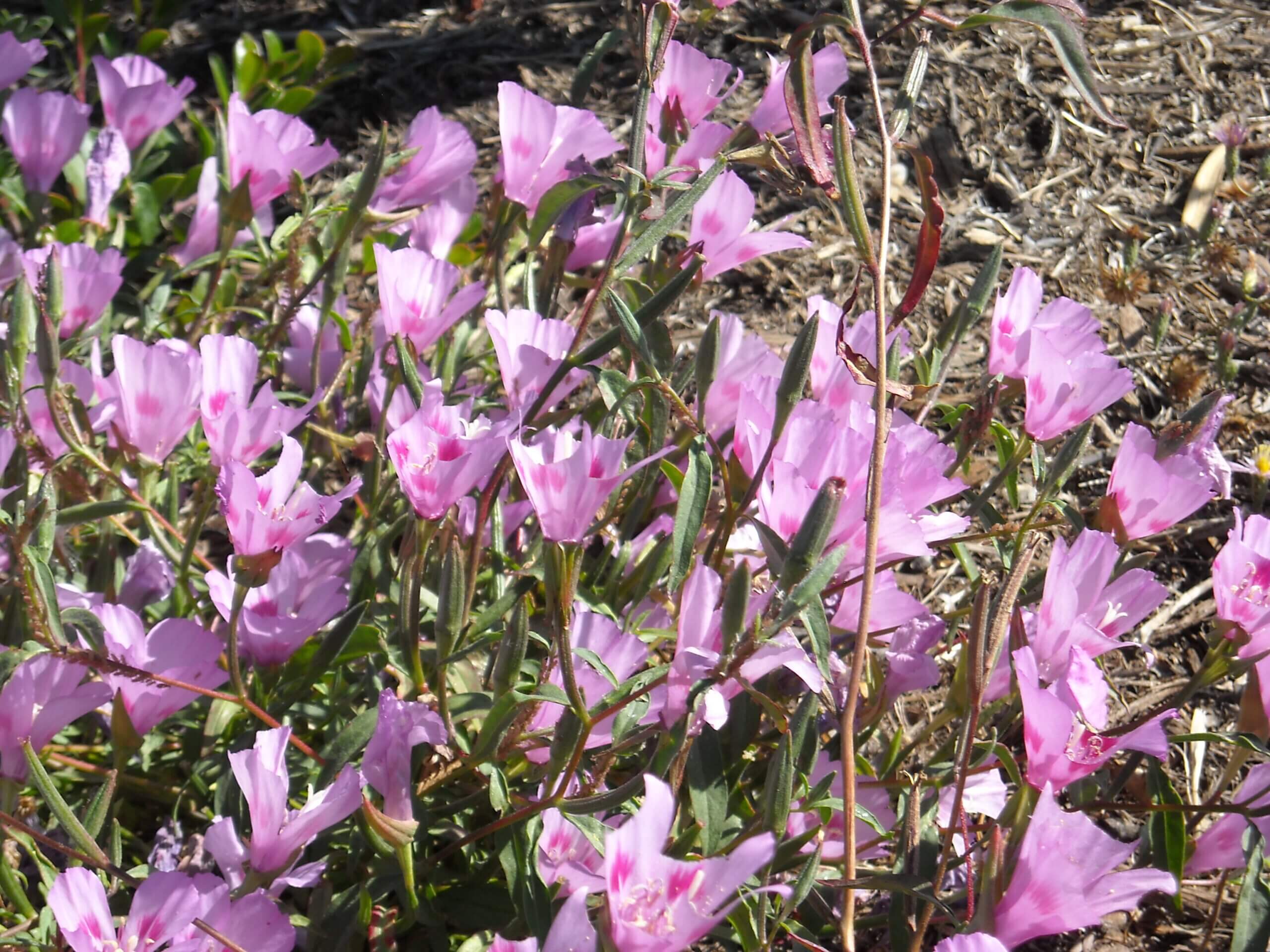The only seed I’m still collecting now that the rainy season has begun, is from Toyon (Heteromeles arbutifolia); I’m picking handfuls of bright red, mature berries, and contained within each berry will be one or more seeds. The berries will be soaked in water, and after a few days, gently macerated, which makes it easier to separate the seed from the flesh of each berry.
By the time the rains start, I’ve finished with most of the seed collecting for the year; in many species seeds mature as the seed ‘pods’ dry, and so collection is done only during dry weather. I collect only from plants with prolific seed set, and then take only small amounts of seed from a number of different plants of the same species. Collecting seeds over a number of days or weeks also increases the genetic variability.
Collected seeds are temporarily stored in open containers, all over my house, until they are thoroughly dry. Then I clean and package the seed in the evenings, or on rainy days, when it’s not possible to work in the garden. Using simple tools and a set of graduated sieves the seeds are separated from their pods, capsules, follicles, siliques, or schizocarps.
In botanical terms these are all different types of ‘fruits’, as is a berry; and ‘fruit’ is the correct botanical term for any mature ovary containing seeds. Plants are grouped together into families based on similarities of flower and fruit structures. “Botany for Gardeners” by Brian Capon (Timber Press, 2005) is a very useful and interesting book for those of us who are learning about botany as we garden.
Plants in the Evening-Primrose family (Onagraceae) set seeds in capsules, which are usually four-chambered. When I collect seed from Clarkias, annual plants in this family, I cut the tops of stems with capsules attached. These plants produce a prolific amount of seed, much of which is eaten by insects and birds.
Finches usually eat seeds while they’re still on the plant; I’ve watched little Goldfinches moving up and down the stems of Clarkias and Yellow Evening Primrose (Oenothera elata ssp. hookerii), a biennial plant in the same family, taking seed from the open, upright capsules. Birds are messy eaters, so much seed is scattered on the ground, where birds like Towhees, Juncos and Golden-crowned Sparrows forage. While they’re foraging, with the typical sparrow ‘double-scratch method’, the seed that is not eaten is scratched into the ground, ready to germinate as soon as the rainy season starts.
Within a week after the first rain in October dense patches of tiny seedlings were evident all over my garden. There’s some predation, since voles and sparrows like to eat ‘greens’, so the patches get thinned out a bit, but still hundreds of seedlings survive. Two months later these seedlings are well developed, about 2 to 3 inches tall, with “true” leaves fully formed, and easy to transplant.
So, although we start a lot of annual wildflowers from seed under controlled conditions in the greenhouse, we also simply transplant a lot of seedlings that I dig out of my garden. Using a hori-knife, I can gently tease the seedlings out of my beds and gravel pathways with root systems intact. Then I immediately place them in soil contained in a trug, making sure the roots are covered. That same day we transplant the seedlings into 4” pots, let them recover for a few days in the shade after transplanting, and then grow them on in a sunny, protected location.
The most important things to be aware of when working with these delicate seedlings are; to cover roots quickly with soil, and to always handle them by their leaves, not the stems. Delicate hair-roots can die within minutes when exposed to air; and if the stem is crushed or damaged the lifeline is destroyed, and the seedling will not survive.

